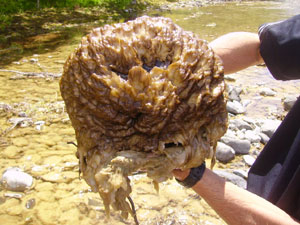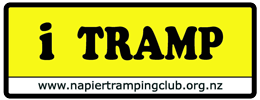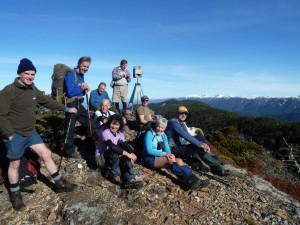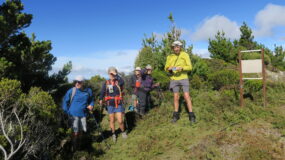 Didymo poses a major threat to our waterways. It’s already widespread in the South Island, and the challenge is to stop it entering the North Island. The “Check, Clean, Dry” campaign has focused on anglers, but the same rules apply to trampers who often routinely cross several rivers in a single day’s walk.
Didymo poses a major threat to our waterways. It’s already widespread in the South Island, and the challenge is to stop it entering the North Island. The “Check, Clean, Dry” campaign has focused on anglers, but the same rules apply to trampers who often routinely cross several rivers in a single day’s walk.
Here’s some advice from Leighton Simmons at Hawke’s Bay Regional Council:
Didymosphenia geminata, commonly known as didymo or rock snot, grows in warm and shallow water. It can form large mats on the bottom of lakes, rivers and streams. This can affect stream habitats and sources of food for fish and make recreational activities unpleasant.
No North Island sites have yet tested positive for containing live didymo. However, this invasive algae is microscopic and it can be transferred between waterways and start new colonies very easily. Didymo cells can remain viable for months after leaving a waterway, if they remain moist.
Once didymo has infected a waterway, it is virtually impossible to eradicate, so the most effective method for controlling this pest is to stop the first invasion. The strategy: Act as though each waterway you’ve just left contains didymo and the next one doesn’t.
Anyone who gets wet in a stream or river should ‘Check, Clean, Dry’ any gear that has come into contact with the water, before entering another waterway. When leaving a waterway, look for and remove any visible clumps of weed or algae from your boots and clothing.
There are several ways that freshwater users can clean their gear.
Items must be soaked in recommended cleaning solutions until fully saturated, plus for an additional minute, to kill didymo. Solutions that can be used are 5% dishwashing detergent or nappy cleaner, 5% saline solution or 2% household bleach. If none of these methods are suitable, items can be soaked in very hot water (above 65°C) for at least one minute or in hot water (above 45°C) for at least 20 minutes. More absorbent items require longer soaking times to allow for saturation. Items can also be frozen to kill didymo. If items are not cleaned using the above methods, they need to be completely dry to touch for at least 48 hours before they can safely contact another waterway.
Of course, the most effective method is to restrict the use of equipment to a single waterway, but this is impractical for trampers.
For further information on cleaning methods for specific equipment, visit www.biosecurity.govt.nz/pests/didymo/cleaning. For suspected didymo finds, contact the MAF hotline on 0800 80 99 66.



Leave a Reply